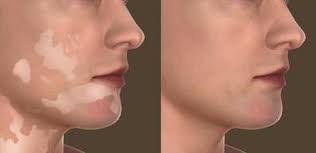
Vitiligo Surgery
Vitiligo surgery is an effective method of treatment for selected, resistant vitiligo patches in patients with vitiligo. Surgery is indicated for stable vitiligo that does not respond to medical treatment. This can be a very effective option for treatment of resistant patches especially on visible areas of the body. Various surgical modalities have been tried for the same. The choice of the surgery depends on many factors like the size of the patch, area of involvement, duration of the disease and affordability. We at CutopiaTM take into consideration all these factors and customize our treatment by combining various medical, physical and surgical modalities to produce optimal outcome. The surge=ical modalities include
(i) Punch Grafting
This is a relatively easy modality employed for small to moderate size patches especially on not-so visible areas of the body. Small punches of whole depth of skin are taken from the donor area (usually an unaffected area on the thigh) and are grafted to the recipient area. Pigmentation gradually occurs from the patches over a period of time. It is cost effective and produces reasonable results.
(ii) Split Thickness Skin Grafting
This technique is based on transferring the whole of epidermis, the outer layer of skin along with a part of dermis from donor site to the recipient site. This method has the advantage of treating a relatively large area in a short period of time.
(iii) Suction Blister Epidermal Grafting
This procedure consists of obtaining very thin skin grafts consisting of only the epidermis. A physiological split is made at the dermo-epidermal junction by the application of prolonged suction at a negative pressure of -200 to -500 mm of Hg to the donor site. Thin grafts are applied to the dermabraded recipient site. It yields excellent cosmetic results as the graft is very thin. Another major advantage is that it carries the least propensity to produce scarring.
(iv) Non-cultured Melanocytic Transfer
In this technique, a shave biopsy of the skin is taken and treated with various tissue lysing agents and a cellular suspension of keratinocytes and melanocytes is obtained, which is transplanted on the denuded recipient site. the advantage that a fairly large area can be treated with the donor-to-recipient expansion ratio ranging from 5-10 fold.
